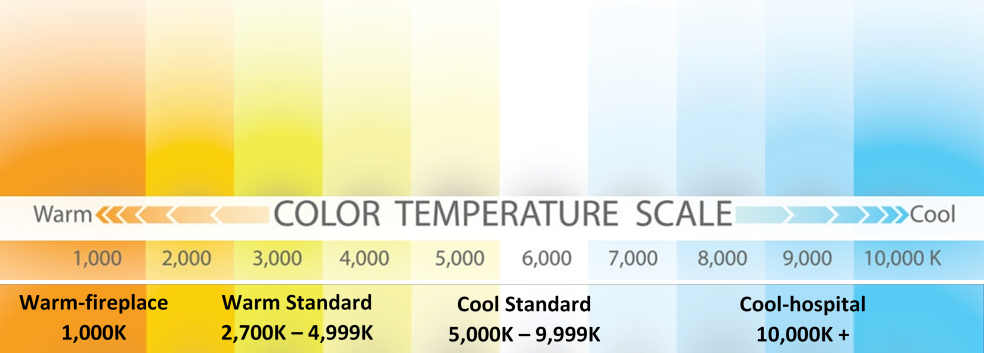FAQ
Common LED lighting terms for efficiency and reliability
Wattage
Wattage is the measure of how much energy a lamp uses to light up.
The wattage of an LED lamp is usually the most marketable feature. While there are other benefits to LED lighting over traditional lighting, their reduced wattage consumption is still the biggest advantage. LED lights generate much lower emissions than Halogen, incandescent, and compact fluorescent lamp lights providing a much smaller carbon footprint and thereby making them far more environmentally friendly.
Replacement Wattage
Replacement wattage indicates the wattage of the traditional lamp that is being replaced by the LED bulb or fixture.
Replacement wattage will help you find an LED bulb that will be bright enough to replace the one that you are currently using. To replace a 100-watt incandescent bulb, choose an LED at approximately 1,600 lumens while choosing a replacement for a 40-watt incandescent bulb would be around 450 lumens.
To find the right conversion from Halogen to LED, you can use this link, https://www.interior-deluxe.com/lumens-to-watts-converter.html
|
Quick Conversion
|
||
|
Halogen Watt
|
LED Lumen
|
|
| 40 | 450 | |
| 60 | 800 | |
| 75 | 1100 | |
| 100 | 1600 | |
Rated Life
An LED’s rated life is how long it is expected to perform before reaching 70% of its original brightness. The rated life of traditional light sources I how long it is expected to perform before it burns out.
LEDs don’t typically burn out; they lose their brightness over time. An LED’s rated life is when the light is expected to be 30% dimmer than when it began.
Some LED bulbs can replace a 4,000-hour halogen lamp and maintain 70% brightness up to 50,000 hours.
Common LED lighting terms for light output or brightness
Lumens
Lumens are the measurement of how much light a bulb emits.
Lumens are important in comparing an LED bulb to a traditional light source. Knowing the approximate equivalency will help be sure that your new bulb has the right amount of brightness for its intended purpose.
Center Beam Candle Power (CBCP)
Center beam candle power measures the intensity of light at the center of a beam of light.
This is an important measurement for spot and accent lighting. It isn’t always enough to use only the lumen output when determining if a lamp will be bright enough. It is possible to have a high LUMEN output, but a low CBCP which would disperse the light over a larger area and not provide the accent you are trying to achieve. Ask before you buy!
Efficacy (Lumens per Watt)
Efficacy is a ratio of how much light is being produced per watt of energy consumed—the Lumens per Watt.
The higher the efficacy ratio, the more efficient the light is. Manufacturers continue to make improvements to the manufacture of these lights and efficacy ratings are constantly improving.
Color Temperature (CCT)
Color temperature, officially referred to as Correlated Color Temperature, is a numerical value that indicates the color of light emitted from a lighting source. The cooler temperatures (higher numbers) tend to appear brighter. Some LED manufacturers will use lower wattages at higher color temperatures to make their product appear brighter. When changing over to LED from Halogen lighting, understanding these differences can assist in selecting the most suitable replacement lighting.

Color Rendering Index (CRI)
CRI is color rendering index. In essence, the CRI measures a light source’s ability to reflect colors accurately.
Using CRI that is too low tends to make everything appear to be different colors than they really are. The higher the CRI, the more desirable the color output will be. Keeping in mind what your goal is will help to determine which CRI you want your LED lights to contain.
Dimmable
LED technology isn’t always compatible with dimmers, be sure that the lamps you use in those fixtures are rated as “dimmable” and that the dimming system is compatible to the voltage and phase of your wiring.
